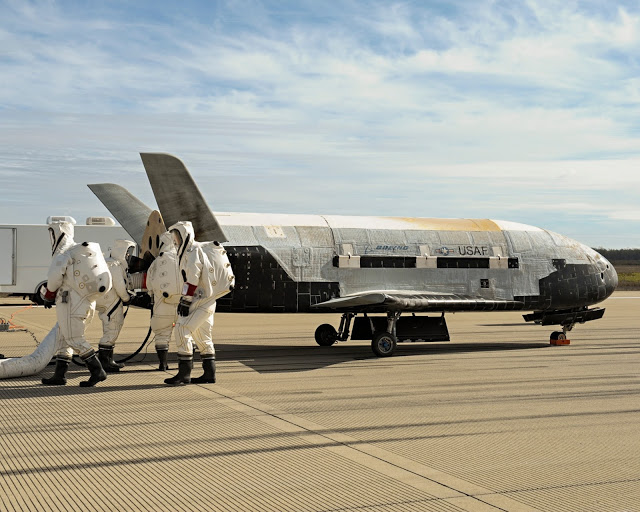IBTimes UK has been informed that the US Air Force is currently testing out a version of the EmDrive electromagnetic microwave thruster on the X-37B unmanned military space plane, while the Chinese government has made sure to include the EmDrive on its orbital space laboratory Tiangong-2.
A low thrust pendulum at the NASA Johnson space center was used.
The best conventional Hall thruster can produce 60 millinewtons per kilowatt which is an order of magnitude more than the emdrive that was tested.
Light sails and photon propulsion (zero propellant propulsion) produces two orders of magnitude less the emdrive. 3.33-6.67 micronewtons per kilowatt.
This appears to conclusively prove that emdrive works for propulsion in terms of lab work. The other final thing is to put one into space and see it go a serious distance.
Testing for propulsion in space would be conclusive if EMdrive works.
AThe Tiangong-2 is a space laboratory that China launched into space on 15 September aboard a Long March 2F rocket. It is not designed to be a permanent orbital station, but is instead a testbed for key technologies that China wants to use on its large modular space station, which is set to launch in 2023.
The Tiangong-2 is big enough for two astronauts to carry out experiments in it and carries 30 days of life support resources aboard it. The space laboratory measures 10.4m in length and has a diameter of 4.2m. On 18 October, the Shenzhou 11 manned spaceflight carrying Commander Jing Haipeng and Chen Dong docked with the Tiangong-2 on 18 October at an altitude of 393km. Jing and Chen will spend 30 days in space conducting various experiments using the Tiangong-2
Scientists from the Northwestern Polytechnical University (NWPU) in Xi’an, China were one of the first in the world to try to build their own version of the EmDrive in 2008, and between 2012 and 2014 they published a series of papers reporting that they had measured net thrust.
However in 2014, they found that the thrust measured was a false positive experimental error due to a power cable, and when they revised the study with an improved EmDrive prototype, they found that any possible thrust being emitted by the device was far too small for their laboratory setup to measure.
In October EmDrive inventor Roger Shawyer confirmed that the UK Ministry of Defence and the US Department of Defense are interested in using the EmDrive to power space satellites, because a propellant-less rocket engine would enable the military to get close to a target without anyone knowing it was there.
In the meantime Roger Shawyer is patenting a new EmDrive thruster that features a single flat superconducting plate on one end, while the other end is a unique shaped plate that is non-superconducting.
He plans to manufacture thousands of the devices as part of his joint venture with UK aerospace firm Gilo Industries Group, and hopes that the EmDrive can be used to reduce the cost and time to space, as well as powering flying cars and helping to solve the global energy crisis.

Brian Wang is a Futurist Thought Leader and a popular Science blogger with 1 million readers per month. His blog Nextbigfuture.com is ranked #1 Science News Blog. It covers many disruptive technology and trends including Space, Robotics, Artificial Intelligence, Medicine, Anti-aging Biotechnology, and Nanotechnology.
Known for identifying cutting edge technologies, he is currently a Co-Founder of a startup and fundraiser for high potential early-stage companies. He is the Head of Research for Allocations for deep technology investments and an Angel Investor at Space Angels.
A frequent speaker at corporations, he has been a TEDx speaker, a Singularity University speaker and guest at numerous interviews for radio and podcasts. He is open to public speaking and advising engagements.




